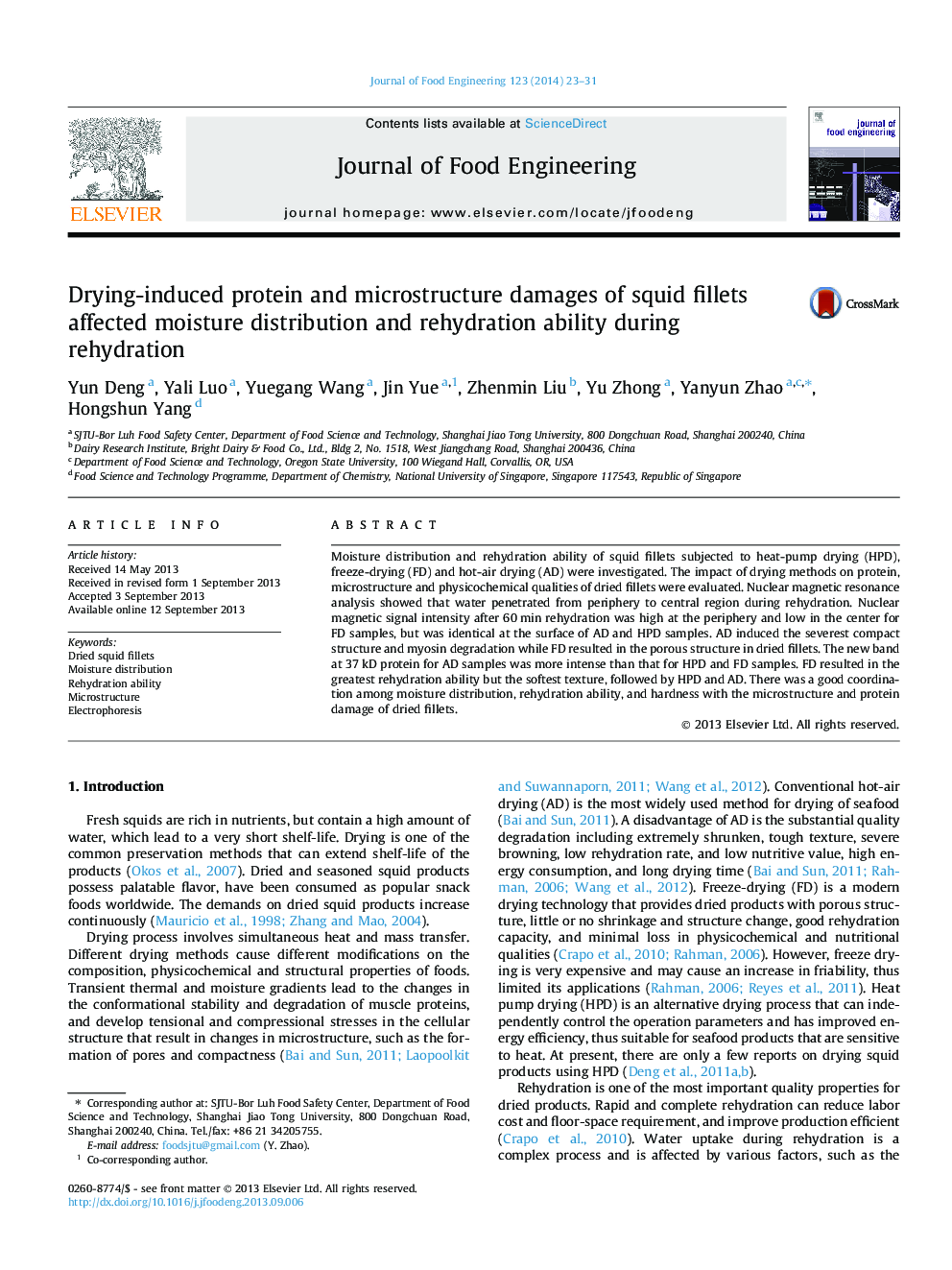| Article ID | Journal | Published Year | Pages | File Type |
|---|---|---|---|---|
| 223205 | Journal of Food Engineering | 2014 | 9 Pages |
•Microstructure, protein and rehydration ability of dried squid fillet were studied.•NMR showed that water penetrated from periphery to central during rehydration.•Signal intensity was high at the periphery and low in the center for FD sample.•FD caused the most porous structure, softest texture and highest rehydration.•Moisture distribution correlated with microstructure and protein denaturation.
Moisture distribution and rehydration ability of squid fillets subjected to heat-pump drying (HPD), freeze-drying (FD) and hot-air drying (AD) were investigated. The impact of drying methods on protein, microstructure and physicochemical qualities of dried fillets were evaluated. Nuclear magnetic resonance analysis showed that water penetrated from periphery to central region during rehydration. Nuclear magnetic signal intensity after 60 min rehydration was high at the periphery and low in the center for FD samples, but was identical at the surface of AD and HPD samples. AD induced the severest compact structure and myosin degradation while FD resulted in the porous structure in dried fillets. The new band at 37 kD protein for AD samples was more intense than that for HPD and FD samples. FD resulted in the greatest rehydration ability but the softest texture, followed by HPD and AD. There was a good coordination among moisture distribution, rehydration ability, and hardness with the microstructure and protein damage of dried fillets.
